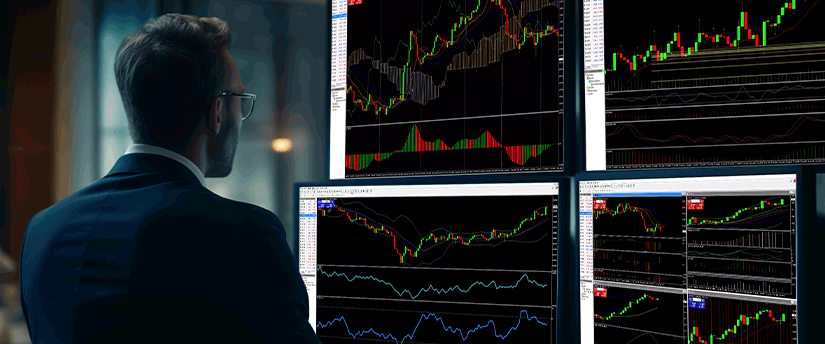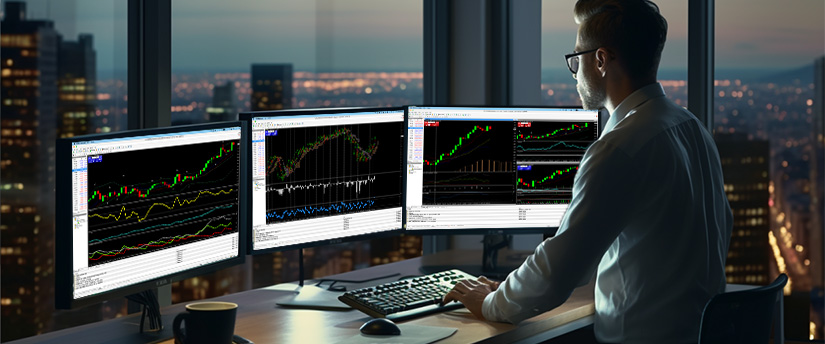In the world of finance, CFDs, or Contracts for Difference, are agreements which traders use to speculate on the asset’s price movement. They do not actually own the underlying asset. CFDs are leveraged products, meaning that you can control a larger position with a small initial deposit. Profits could be generated if the market moves in a favourable direction.
However, it is important to keep in mind that leverage may increase losses too, just as quickly as profits. So, although CFD trading is widely chosen by traders it comes with risks like unexpected volatility, use of excessive leverage that could increase losses and more.
To trade effectively over a long period of time, it’s about how big your profits are compared to your losses and not how often you profit. Every trade carries the risk of loss. Even experienced and professional traders lose sometimes. A streak of winning trades can still result in an overall loss if risk isn’t managed properly.
نتيجة لذلك، فإن وجود إدارة مخاطر مناسبة أمر بالغ الأهمية، حيث يمكنك التحكم في مقدار المخاطرة التي تشعر بالراحة معها، وفهم مقدار الخسارة التي يمكنك تحملها في كل صفقة، بالإضافة إلى اتخاذ الخطوات اللازمة للتحوط ضد الأحداث المهمة في السوق.
5 risks in CFD trading
5 مخاطر لتداول العقود مقابل الفروقات
مخاطر السوق
With CFDs you can make speculations on whether the price of an asset will increase or not. If you believe it will go up, you go long but if you believe it will go down, you go short. However, even experienced traders can go wrong.
Unexpected events, news or changes in policy may lead to the market suddenly moving. Since CFDs are sensitive to small changes in the market, a small move that goes against your trade may lead to losses. In such a case, you may need to pay some more money, also known as margin call or your trade might even be closed by your provider in case of a loss.

السيولة والفجوات السعرية
There are times when there aren’t enough buyers and sellers in the market making it difficult to close a trade at a good price. This could lead to additional losses. In markets that move fast, prices can also jump unexpectedly. This also known as gapping. Therefore, if your trade is not filled at the price you expected, you may lose more money than anticipated.
الرافعة المالية والتقلبات
You can trade CFDs with leverage which means you can use a bigger amount of money to open a larger position. Depending on whether the market moves in your favour or against you, this could result in higher profits and losses.
Markets can also move sharply and without warning leading to sudden changes in prices caused by political events, natural disasters or major news. Like leverage, volatility can create trading opportunities, but it can also increase the risk of quick losses.
How to manage risk wisely
استخدام الهامش بشكل مناسب
استخدم الهامش بشكل مناسب
عند فتح صفقة عقود مقابل الفروقات، استخدم جزءًا صغيرًا فقط من الأموال المتاحة لديك كهامش. حاول عدم وضع كل رأس مالك في مركز واحد، وبدلاً من ذلك حاول الاحتفاظ بأموال إضافية في حسابك التجاري لتعويض أي خسائر بينما لا يزال مركزك مفتوحًا.
استخدم أوامر وقف الخسارة
A stop-loss order will help you minimise losses since you are choosing a price level at which your trade should close automatically if the market moves in the opposite direction. This can help in hedging against bigger losses.
You can use a stop-loss either when placing a trade or afterwards. Trailing stop losses are also offered by some brokers. These move with the market and secure profits.
Use CFDs for hedging purposes
تسمح لك العقود مقابل الفروقات بالتداول على الأسعار التي تنخفض. لذلك، يمكنك استخدامها لحماية مراكزك. على سبيل المثال، إذا توقعت هبوطًا قصير الأجل في القيمة ولكن لديك محفظة طويلة الأجل، يمكنك فتح صفقة بيع لعقد مقابل الفروقات.
إذا انخفض السوق، فقد تساعدك أرباحك من صفقة العقود مقابل الفروقات على تغطية خسائر محفظتك. هذا يشبه وجود تأمين لصفقاتك.

التزم بخطة تداولك
قد تؤثر العواطف سلبًا على تداولك، مثل التمسك بالخسائر لفترة أطول مما ينبغي. لهذا السبب من المهم أن يكون لديك خطة تداول قوية مع قواعد واضحة. افتح أو أغلق الصفقة بناءً على خطتك، وليس بناءً على عواطفك مثل الخوف أو الطمع.
كن على دراية بالمخاطرة مقابل المكافأة
Skilled traders constantly weigh the possible gains against potential risks. This is referred to as risk/reward ratio. Aim to choose trades where the potential profit is greater than the potential loss.
استخدم محفظة متنوعة
كما تم مناقشته سابقًا، حاول عدم وضع كل أموالك في أداة واحدة أو صفقة واحدة بشكل عام. وزع أموالك عبر أنواع مختلفة من الأصول، بما في ذلك الفوركس، والسلع، والأسهم، والمؤشرات والمزيد. يمكن أن يقلل هذا من المخاطر الإجمالية دون خفض العوائد المحتملة.
حافظ على صغَر الخسائر
Even the best traders experience losses sometimes, so the key to minimise those losses is never to risk more than 1% of your total capital on one trade. This way, a string of losing trades won’t harm your trading account.

أفكار ختامية
Losses are normal in trading irrespective of whether you are a professional or a beginner. Understanding risk and familiarising yourself with how to handle it, is an essential part of a trading journey. You can help manage losses while still having the chance to generate revenue if you use the proper risk management tools. Learning how to control and potentially limit risk can help you stay in the game longer while protecting your capital.
A major step of managing risk properly is understanding your trading strategy and working on it until you are confident enough. In CFD trading, risk management is vital because of leverage since it increases profits and losses as well. The latter may even be bigger than the original trade, especially in markets that move fast.
To help protect against risks, stop-loss orders are often used to automatically close a trade if the market goes in a certain direction. Traders can also use a variety of other tools offered by many brokers to manage CFD trading risk more efficiently.
These include educational materials to improve trading skills, an economic calendar to monitor market events as well as built-in risk tools like stop-loss orders. By using these tools, you can reduce your exposure to large losses while maintaining your potential for revenue. Risk management does not remove risk entirely. It helps traders stay in control and trade more confidently.
إذا كنت ترغب في تعميق معرفتك بالتداول وتعزيز إدارة المخاطر الخاصة بك، استكشف أكاديمية IronFX للحصول على دورات تعليمية مجانية، ورؤى الخبراء، وأدوات عملية مصممة لمساعدتك على التداول بذكاء وبثقة أكبر.
إخلاء المسؤولية:
لا تُعتبر هذه المعلومات نصيحة استثمارية أو توصية استثمارية، بل هي تواصل تسويقي.
















